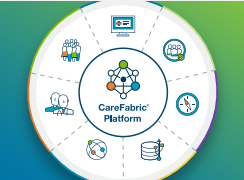The more things change, the more they stay the same.
At least, that’s what I've noticed in my time as a Revenue Cycle Management leader. The healthcare industry has changed at lightning speed in the last decade. And yet, revenue cycle teams are still dealing with many of the same challenges.
You can argue that healthcare reimbursement has changed more in the past 10 years than in the previous 50 combined. If you look on a timeline, you’ll see ICD-10 codes and ACA coverage in 2014-15, MACRA in 2016-17, Medicaid expansion and the opioid crisis in 2018-19. And then of course, COVID and the era of virtual healthcare, and the AI and automation revolution.
What are some of the constant challenges that if addressed, can make a big impact on revenue cycle teams?
A combination of Netsmart RCM expertise and insights from eleven different publications dating back almost a decade informed the answer to this question. Despite the rapid evolution in the industry, denials management and staffing are two pain points that have remained constant and can make a big impact with dedicated attention.
In a recent webinar, I shared some key strategies for RCM leaders to address denials and staffing challenges. We like to call it the RCM Success Toolkit. Do you know what you need in your organization’s toolkit? Keep reading to find out.
Denials: from Management to Prevention
As the saying goes, an ounce of prevention is worth a pound of cure.
Correcting a claim you’ve already billed can be laborious and time consuming. Sometimes, you don’t have direct access to the patient for the information you need. Or you can’t find the correct payer until after timely filing deadlines. Either way, a denial can easily snowball.
A successful RCM operation aims to prevent denials before they happen. So, what do you need in your toolkit? Let’s find out by looking at three of the most common reasons that claims are denied: Eligibility/coordination of benefits (COB), authorization and credentialing.
1. Eligibility/COB Denials
Eligibility/COB issues account for about 32% of all denials*. Many of your patients probably receive recurring services, so if you're not prioritizing eligibility denials, the volume is compounded with each additional service rendered. From a process standpoint, your rev cycle operation should be focused on the following:
· Verifying coverage before services/appointments
· Sequencing COB information appropriately
· Ensuring claims get billed electronically to the correct electronic payer ID
· Training teams on proper payer selection
The good news? Every single one of these can be made easier and less labor intensive when combined with technology. I'll give you an example. When Netsmart works with RCM teams, we use an automated eligibility verification service that lets us look at all active patients at the first of the month and automate eligibility checks. This allows us to immediately see which patients are coming back as inactive or with new coverage.
Another key to preventing eligibility denials is a strong new patient admission process. Your intake team has a tough job. They need to identify all coverages that a patient might have, verify the order in which those payers should be billed, and validate all demographic and eligibility information. For instance, if a client has Medicare and Medicaid coverage, they need to automatically bill Medicare first and always bill Medicaid as the payer of last resort. Training teams on proper payer selection can be extensive––and even with the best team, you’ll never eliminate human error.
Correct system configuration is also going to play a big role in ensuring your claims get to the right place for processing. Payers have done their part by providing an electronic payer I.D.––usually documented on a client’s insurance card—for appropriate claims submission. But that only helps if you have the right configuration in your system so the payer you select at intake has the correct payer ID for billing. And your intake team may not be aware if there’s a discrepancy if not properly trained on how to select the correct payer in your EHR.
Combining people, process and technology is the best use of your toolkit. By using a coverage discovery solution, you may be able to identify insurance coverage a client didn’t provide as well. With our coverage discovery solution, we can input bits of a patient’s demographic information and check a cluster of payers to see if that patient's demographic information shows up and pulls back any coverage. That's a game changer when you can't get a hold of the patient to verify insurance coverage.
2. Authorization Denials
Authorization issues account for about 8% of denied claims*. These can be tricky because the root cause can range from simply not obtaining an authorization, to provider credentialing, or missing referrals. But overall, your prevention processes should focus on:
· Streamlining end-to-end processes across LOBs and payers
· Using electronic health record capabilities to manage authorizations
· Ensuring providers are enrolled with relevant payers
· Verifying referral receipt before services, if applicable
· Checking the 271 eligibility response for authorization and referral requirements
From a front-end admission perspective, it’s all about verifying benefits and understanding whether you need an authorization or referral from the payer to provide care. This becomes increasingly important for value-based care or with multiple service lines. And manually, it’s very hard to do.
I've found that using electronic health record capabilities and process flow can improve accuracy and work toward preventing the labor of submitting a retro authorization. Highly automated tools exist that can provide you with authorization requirements without having to call utilization review.
3. Credentialing Denials
Credentialing issues account for 8% of claim denials*. A provider might not be effective on DOS, linked to your group enrollment, or not have the required credentials to be eligible to provide services. For credentialing denials, your team should focus on:
· Enrolling providers with payers prior to rendering services
· Completing provider enrollment, including all service locations
· Aligning specialties and taxonomies with appropriate licensure and job duties
Let’s talk through the three root causes mentioned above.
Provider is not effective.
Providers may be performing services before they complete enrollment with a certain payer. To head this off, you should enroll these providers with your payers as soon as possible. Netsmart provides a credentialing service to address this. We work with providers to get their new hire packets before they even start, so we can begin enrollment before they're onboarded and seeing patients. We can also work with our clients’ EHRs to hold billing for providers who have seen patients before their effective dates.
Provider is not being linked to a group.
This is a common challenge for providers who work at multiple locations. Our credentialing service recommends creating a master roster to track every provider, and ensure they are linked to the payer and all service locations. This is a very simple digital tool to implement, and it allows you to regularly track your clinical staff.
Provider is not eligible to provide services.
This can happen for many reasons, but the best strategy for your team is the same as above. Again, a master roster can be simple, but it’s usually best when integrated into your digital platform.
Becoming Data Driven
My team is zeroed in on using data and data dashboards to monitor things like denials and unbilled claims. If you’re going to prevent denials, you must start with understanding what’s causing them. From an unbilled claims perspective, it’s crucial to avoid a situation where cash flow issues occur due to unbilled claims rising – and it’s a reason we diligently track them. We also monitor the number of days from a clinician providing a service to the day it bills. This can facilitate a reduction of days in A/R and helps speed up overall collections by working with providers to sign off on their notes and bill sooner.
Strategic Staffing
We are living in the most competitive labor market that healthcare has seen in years. And yet, if you remember the top RCM pain points, staffing has been an issue for the last decade. Your back office works hard, and much of their job is repetitive. If you’re an organization with multiple different service lines, your billing staff has different reimbursement models based on payer source. Maybe they’re billing in multiple states. Or just dealing with dual coverage eligibility situations.
It’s getting harder to find people with the skill set for this kind of work. So when you have them, you don’t want to lose them.
In many ways, the strategies you need for staffing are the same ones you use for denials. You have to be proactive to drive retention. And you need a little technology in your toolkit to operate efficiently and reduce redundancies. Let’s take a look at some of the top strategies that we recommend to our RCM clients today.
Do More with Less
Not only do you want to keep your staff happy, maybe you want to grow and add locations or service lines. But you can’t effectively scale if you’re always hiring a full staff for each new service or location. Instead, you’re raising your overhead. Here’s where technology comes in.
You can use robotic processing automation (RPA), machine learning (ML) and artificial intelligence (AI) to automate parts of your rev cycle process. Contrary to popular theory, this does not always eliminate jobs. The pieces that are easy to automate are also the mundane parts of back-office work––the ones your employees probably don’t like as well––and frees up your staff to operate at a higher level. (Which promotes job satisfaction.)
Collections Automation
Collections automation is a powerful tool that aggregates data from multiple claim sources (such as a clearinghouse or multiple electronic health records) and serves it up to the collector. It allows the collector to work the right claims at the right time. From a staffing perspective, collection automation is all about automating the manual processes that don’t require critical thinking so that your staff can stay focused on the strategic, most impactful functions of their job.
Strategic staffing is two-sided. Automation elevates your workforce by giving the easier tasks to a computer. In RCM, that’s been shown to increase employee engagement and overall staff satisfaction––which is really important for keeping the workforce you have.
But remember that if your revenue line is growing at the same clip as your expense line, you're not really growing at all. Automation addresses both revenue and overhead––and it might be your most important tool of all.
What’s In Your Toolkit?
Every organization’s toolkit will look different. But we’re all facing similar challenges, and that’s not likely to change. The secret is to find the right tools to set your team up for success. With the right strategies, your RCM team will be powerfully equipped to meet the challenges and changes of the next ten––or even 50––years.
*Based on data from Netsmart revenue cycle management team collected in Dec. 2023








